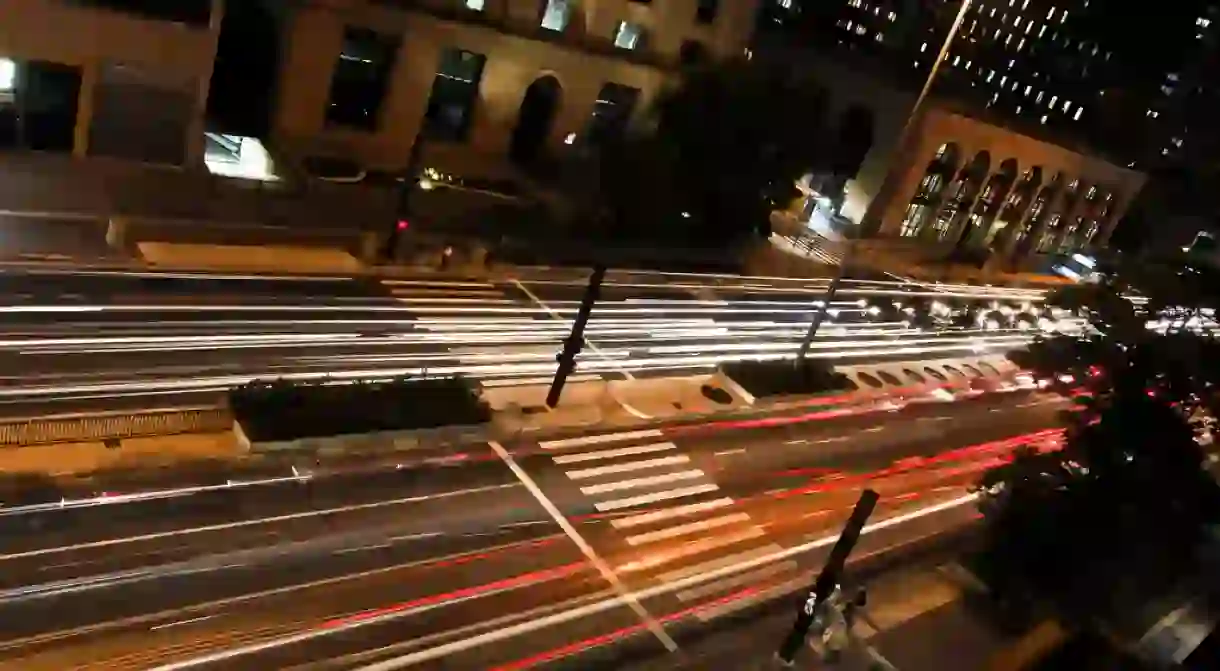Why São Paulo’s Traffic Problem Is Overstated

It is common knowledge that traffic in São Paulo, southeast Brazil’s heaving megacity, is the worst. Evening news in the city is always full of footage of São Paulo’s main avenues with their unbroken chains of red and white, cars coming and going at a snail’s pace. However, when studies are published analyzing the cities in the world with the worst levels of traffic, São Paulo is nowhere to be seen. So, is it actually that bad?
In February 2017, navigation company TomTom released a study of theirs measuring traffic congestion in 390 cities around the world, ranking locales by “congestion level,” which is the percentage of increase in travel time when compared to free-flow, no-traffic situations. São Paulo came in at 71st place with 30%, the same percentage as Toronto, Munich, Barcelona, and Liverpool.
A quick look at the top 10 throws up names such as Mexico City, Jakarta, and Beijing, which are all comparable to São Paulo in terms of size, yet have infinitely worse levels of congestion. In fact, if you’re looking for hellish traffic in Brazil, go to Rio de Janeiro (8th) or Salvador (28th).
Despite its negative reputation, São Paulo has quite a few large roads that can handle heavy traffic. Though they are much maligned by locals, the Marginal Tietê and Pinheiros highways, which run either side of the rivers of the same name (Tietê to the north, Pinheiros to the west), are 20-lane marvels of urban planning.

Even though the city has these highways, this is not to say that São Paulo does not have a traffic issue. Try driving across the city during the morning or evening rush hour, and you’ll see for yourself. One of the reasons for this is the insane number of motor vehicles in the city. Conservative estimates put the total number of cars, motorbikes, and trucks in the area at a whopping eight million. If they were parked in a line, bumper to bumper, they would measure longer than the extent of the city’s roadways.
So why does São Paulo have so many cars? There are a few hypotheses for this, the first being safety. Similar to its traffic, São Paulo’s level of crime is also overstated. The same afternoon news shows that constantly show images of traffic jams also run a slew of sensationalist “true crime” pieces, presenting the city as a Mad Max-esque dystopia where no one is safe, and it’s every man for himself.
Again, just like the traffic, while São Paulo does have some troubling issues with crime (though predominantly in peripheral neighborhoods), the media overblows this to a shocking extent. For the locals who have grown up with this embedded message that São Paulo is an inherently dangerous city, being insulated in a car provides a degree of separation and a feeling of safety between people and their imagined lawless surroundings.
At the same time, there is a much more relatable explanation for São Paulo’s massive automobile fleet. The city is huge, and there are people everywhere. And as in any other big city, people are constantly trying to get away from the crowds. Having a car provides Paulistanos with a rare opportunity to have a place to themselves, even if they are sitting in a traffic jam.

However, perhaps the overbearing reason for São Paulo’s love of buying cars is the city’s deficient public transport system. São Paulo’s subway network only has five lines, and while there are an additional six overground train lines, these are poorly maintained and do not have nearly enough vehicles to meet the demand. Ironically, São Paulo’s subway system is often complimented by tourists. It is quick, efficient and the trains are in excellent condition, with lots of space for passengers. The problem is, of course, that there are not nearly enough stations or lines.
The majority of São Paulo’s population lives in peripheral neighborhoods, commuting into the center every day. As the subway barely stretches out of the expanded center of the city, these particular Paulistano workers are forced to drive or face monstrous commutes of more than two and a half hours every morning. Even affluent neighborhoods to the south of the city, such as Itaim Bibi, Moema, and Brooklin, have no train or subway stations of which to speak.
There are constantly plans to extend São Paulo’s public transport network, but projects move at a snail’s pace. Subway line 4, which opened in 2010 (having originally been foreseen to open in 2007), was due to receive four new stations in strategic locations before 2014. Three years on, none of the four are completed, and the population is even skeptical of the state government’s estimate that they will be ready in 2019.

Monorail projects to the east and west of São Paulo were promised to be delivered before the soccer World Cup in 2014. By 2017, only two of the projects’ 36 stations have been completed.
The subway system of São Paulo is the responsibility of the São Paulo state government, an office held by the Brazilian Social Democratic Party (PSDB) since 1995. In these 22 years, the government has only increased the subway network by an average of two kilometers a year, despite billions of reais invested. With a more efficient and inclusive public transport system, traffic in São Paulo would be infinitely better.













